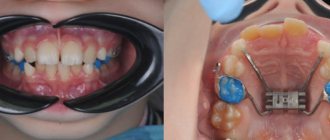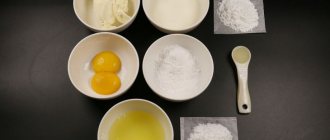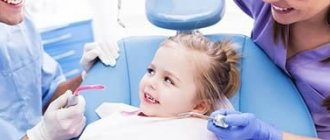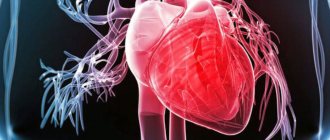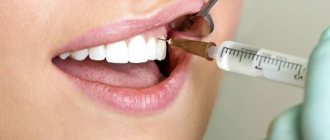What is anesthesia?
The procedure for injecting special drugs aimed at eliminating local sensitivity is called anesthesia. The active substance of the anesthetic blocks the conduction of impulses from nerve endings to the brain, preventing the occurrence of pain in response to manipulations. After the anesthetic wears off, sensitivity is completely restored.
Today in dentistry there are several types of local anesthesia. The most commonly used anesthesia is an injection into the area of one tooth. Other methods are aimed at “switching off” the nerves of several teeth at once.
The anesthesia procedure allows you to avoid discomfort during dental procedures, which is why anesthesia is used everywhere during the treatment and extraction of teeth.
Why doesn't the medicine work? TOP 10 “disobedience” of the patient
One of the most popular patient complaints is: “the medicine doesn’t work.” When we start to find out why this is happening, it turns out that half of the prescribed drugs were replaced with analogues, and they decided not to buy the other half. And what they have acquired is accepted “as they remember.” Let's look at the most popular “disobedience” and why they are dangerous.
10th place The chair has a big leg... Many people independently regulate the dose of the drug. What if the doctor went too far? Why can't this be done? The dosage is usually determined based on the average body weight of the patient and his age. Thinking that if it doesn’t hurt too much, you can take half a tablet is wrong. There is a concept of therapeutic concentration that is necessary to achieve an effect.
9th place. He is his own doctor. The patient does not take medications prescribed by the doctor, choosing alternative methods independently. Why can't this be done? An untreated disease can become chronic and become a lifelong problem.
8th place. I can't refuse. Many patients do not give up bad habits during treatment. Why can't this be done? Many medications are incompatible with alcohol and are even life-threatening. The same applies to nicotine, which constricts blood vessels and prevents the penetration of the active substance into tissues.
7th place. It was a waste of time. The patient independently changes medications to analogues. Why can't this be done? Not all medicines are interchangeable, even if they contain the same active ingredient. To correctly replace a drug, you need a medical or pharmaceutical education.
6th place. What in the world is delicious? In sixth place is failure to follow diet recommendations. Why can't this be done? Proper nutrition during illness is part of the treatment. So, if you eat fried potatoes and lard during cholecystitis, recovery will never occur. And if you take anticoagulants with cranberry juice, there is a risk of bleeding.
5th place. Before or after? The patient does not attach importance to when to take the drug - before, during or after meals. Why can't this be done? Many medications can be taken after meals, but there are exceptions. For example, antacids that reduce stomach acid must be taken 30 minutes before meals, otherwise they will not be beneficial. And non-steroidal anti-inflammatory drugs should not be taken on an empty stomach, as they irritate the mucous membrane.
4th place. Treated and good! Half of the patients are not examined after treatment. Why can't this be done? Temporary improvement does not mean that a person is healthy. Treatment often needs to be adjusted. After some diseases, complications may develop. To avoid this, you need to undergo follow-up examinations.
3rd place. It's a bitter pill. In third place are those who like to take their medications with coffee, tea, juice, and milk. Why can't this be done? All listed drinks are chemically active. Tea contains tannin, juices contain fruit acids, milk contains calcium. These substances may react with medications, weakening or neutralizing the effect.
2nd place. The course has been changed. Patients do not take the full course prescribed by the doctor. Why can't this be done? Symptoms of the disease may go away quickly, but it may take time to remove the cause. So, on the 2-3rd day of taking antibiotics, relief often occurs, but during this time not all microbes may die. If you interrupt the course, the remaining microorganisms will gain strength and multiply again.
1 place. Skipping a turn. The first place in the hit parade is to take medications as best you can. Why can't this be done? The essence of taking many drugs is to create a “working” concentration in the blood and maintain it. Otherwise, the medicine will not work at full strength or will not work at all. This is especially important for hormonal drugs, hypoglycemic drugs, cardiac drugs, blood pressure medications, and antibiotics. It is important to understand that “3 times a day” means every 8 hours, and not “after breakfast, lunch and dinner.”
Reasons for the lack of effect of anesthesia
- Individual features of anatomy. The effect of the local anesthetic is ensured by its injection into a specific location near the nerves. However, there are people who have a non-standard structure and arrangement of nerves. In such situations, additional injections of anesthetic solution are required in other areas.
- Local inflammatory process. In the presence of infectious inflammation in the tissues, the pH level decreases, which indicates an increase in the acidity of the environment. Under such conditions, the chemical structure of anesthetics is destroyed and their effect is neutralized. There are several solutions to this problem: preliminary therapy with antibacterial drugs or the use of alternative methods of pain relief that do not affect the area of inflammation (Gow-Gates anesthesia, intraosseous anesthesia, etc.).
- Ehlers-Danlos syndrome. This is a genetic disease that affects the condition of the skin, bone tissue and muscles. With this pathology, conventional anesthesia is not effective, and it is necessary to resort to the use of stronger drugs. In some cases, for high-quality pain relief, several injections are required at once.
- Psychological state of the patient. With dental phobia (panic fear of dental treatment), the production of anxiety hormones that interfere with the action of anesthetics increases. People with this condition are advised to take sedatives before visiting the dentist.
- Red hair color. It is known that red hair is a consequence of a mutation in the melanocortin-1 gene, a change in which also reduces the effectiveness of local anesthesia.
- Poor quality anesthetic. If the storage rules for the drug are not followed and its expiration date expires, you may not expect any effect from the administration of the anesthetic. Therefore, you should be responsible when choosing a doctor and a clinic where treatment will be carried out.
- Insufficient amount of administered drug. If the dosage is incorrectly selected, the anesthetic will not be able to work effectively.
- Wrong choice of drug for pain relief. The anesthetic should be selected by the dentist depending on the method of anesthesia and the desired result.
- Violation of the integrity of the mucous membrane at the site of injection of the anesthetic. The solution will simply flow out of the tissue without having the desired effect. This can happen if you select an injection needle incorrectly, which will injure the mucous membrane, forming a wide channel behind it.
If pain relief is repeatedly unsuccessful during treatment or tooth extraction, the dentist will be able to determine the cause of the problem and select an alternative method of anesthesia.
They're looking in the wrong place
“For such patients there are special pain clinics, where treatment is individually selected,” says Emil Isagulyan, a neurosurgeon-algologist at the Institute of Neurosurgery named after. N. N. Burdenko, Ph.D. “They deal only with pain and consider pain as an independent disease.
Unfortunately, we have few such clinics, and doctors are aimed at eliminating the cause of pain. They often perform multiple operations, looking for formations that can put pressure on the nerve and cause pain - scars, adhesions, hernias, fragments of intervertebral discs, consequences of injuries. This anatomical cause is eliminated, but the pain remains. For such patients there is even a special diagnosis - “operated spine syndrome.” In such cases, the matter is not in anatomy, not in eliminating the cause of nerve compression, but in physiology - in the improper functioning of the nervous system. The body's anti-pain system, which normally works well, is depleted, and the pain system is activated. We don’t know why this happens, but we know how to help.” An article on the topic of exercise therapy and the gym. Pain syndromes can be treated without pills. How not to bring things to such agony? The cause may be the painkillers themselves. After watching enough advertising, we ourselves treat headaches without a doctor and get hooked on pills. As a result, the so-called Overuse headache - it is caused by medications. You cannot treat migraines and other pain that appear periodically on your own. This increases the risk of developing severe pain syndrome. “Advertised” medications can be taken for moderate and rare pain. All others should be treated by a doctor.
“If he can’t help either,” continues Emil Isagulyan, “you need to go to a pain clinic. Over the past year they were opened at the Institute. Sklifosovsky and at the First Moscow State Medical University. They are mainly treated with therapeutic methods. We are engaged in pain surgery; people come to us who cannot be helped there. The main method of treatment is electrical stimulation. We implant a special device under the skin with electrodes that are connected to the nerves, spinal cord or brain. Using the remote control, we turn on the stimulator, which sends signals that modulate the functioning of the nerves. As a result, the pain weakens or disappears. First, we install a test stimulator to check whether it helps a particular patient. If all is well, we install a permanent one. The operation is simple, and the device does not limit life.
Recommendations before visiting the dentist:
- The night before your appointment, drink lemon balm or chamomile tea before bed. These natural remedies have excellent calming effects.
- If you have constant strong feelings, before each dentist appointment, it is recommended to take a course of light sedatives a week before visiting the doctor. For example, “Afobazol” and “Tenoten”, they calm the nervous system, improving well-being and relieving anxiety before dental surgery. Drugs such as valerian and motherwort are best taken in tablets: tinctures are alcohol-based, which impairs the quality of pain relief.
- For the same reason, you should not drink alcoholic beverages at least 24 hours before your dentist appointment. Alcohol is eliminated from the body within 72 hours, but the products of its metabolism remain in the body for another week. To speed up the cleansing of the body from toxic substances, it is recommended to take sorbent preparations.
- Get a good night's sleep and eat before your appointment. This way you will save yourself from additional stress, and, consequently, from unnecessary problems during dental procedures.
- Be sure to tell your dentist about any medical conditions you have and the medications you are taking! This will help the doctor choose the right method of pain relief and anesthetic. In addition, taking certain medications can greatly reduce the quality of pain relief.
The main recommendation would be a careful approach to choosing a dental clinic and doctor. After all, a competent dentist, even if difficulties arise with administering anesthesia, will be able to find the right way out of the current situation.
What to do when regular painkillers stop helping?
Palliative care specialist* Andrei Ivanov answered questions from TV viewers about pain syndrome in seriously ill patients.
— What to do if a previously prescribed painkiller does not help, and the person is in pain?
— The regulatory framework states that any attending physician, including a local therapist, can prescribe narcotic painkillers without restrictions if persistent pain occurs. The therapist can do this even without any consultation with an oncologist or other specialist. This is now provided for by law.
Unfortunately, our therapists very often play it safe and try to send the patient to the oncology clinic so that they can write there what additional drugs can be prescribed. We take this calmly, we write recommendations, but according to the law, therapists must do this themselves without any restrictions or delays.
That is, if the patient’s pain intensifies, then the therapist must immediately either increase the dosage, or the shorter duration of taking the drug, or prescribe a stronger drug.
— Where to complain if medications are no longer effective, but they refuse to prescribe a stronger drug to a cancer patient?
- We need to complain to higher authorities. If your therapist refuses to help, then complain to the head of the clinic. Contact the chief physician, the chief freelance specialist, or the regional ministry of health.
Remember: if the drug does not help, the therapist must change it!
— When are potent drugs prescribed?
-. If the pain is severe and prevents a person from sleeping, actively participating in life, or caring for himself, then it is necessary to prescribe narcotic analgesics.
And if a person was previously helped by non-steroidal anti-inflammatory drugs or antispasmodics, but recently they have not helped even in maximum doses, then one must switch to narcotic drugs.
There are weak drugs and stronger ones. There are drugs in the form of tablets, patches, injections. The doctor can select the minimum dose of narcotic analgesics that will not even cause addiction. In this case, the person will be completely anesthetized.
But if, for example, a person says that he wakes up from pain once or twice, and during the day he experiences discomfort with some movements, then in this case narcotic drugs should not be prescribed yet. First you need to try regular painkillers, non-steroidal anti-inflammatory drugs, antispasmodics. Perhaps a person will be able to do without drugs for a long time.
* Andrey Ivanov – head of the palliative care department of the Novgorod Regional Oncology Center, chief specialist in palliative care in the Novgorod region.
More questions and answers - in the NT program “Tell me, Doctor” (host Svetlana Sterligova):
← In the Novgorod region, the road to sunny Belebelka is being repaired
Prevention
These rules should be followed by all people who experience pain in the left lower abdomen:
- control your stress and its level. To do this, you should meditate and do stretching exercises. Very often, stomach problems arise due to stress. Stretching, meditation will relax the body, mind, reduce pain in the left abdomen;
- Exercise regularly if your stomach hurts on the lower right side. Thanks to constant exercise, constipation is prevented and metabolism is accelerated. In addition, sport helps strengthen the digestive tract, cleanse the intestines, and ensure efficient functioning of the stomach;
- fill out a food diary. Write down all the dishes you ate throughout the day there. This will help you understand why your stomach hurts. You can prescribe your diet for a week, and it is important to indicate even the amount of food consumed. You should also write down your feelings during abdominal pain in your diary (the nature of the pain, their duration);
- watch your weight. Just because you're overweight and not much of it, doesn't mean you can forget about heartburn. Scientists say that the layer of fat puts pressure on the stomach, causing gastric juice to rise into the esophagus, and this guarantees heartburn;
- drink more water if your stomach hurts (about 2.2 liters). To have regular bowel movements and digest food, you need to drink enough liquid. Otherwise, hemorrhoids, polyps, and painful constipation are possible;
- get plenty of rest. If there is a stomach virus in the body, then you should be at peace and have strength. In the case of acid reflux, lack of adequate sleep can lead to serious consequences.
Primary tumors
Primary occurrence of bone cancer is rare. Among such diseases are sarcomas. The primary lesion can be caused by active growth of bone tissue, this occurs in people under the age of twenty.
Symptoms of the primary disease:
- Pain in the focal area. At first, the pain syndrome is mild or moderate. He may disappear, but then appears again. At later stages it is constant and pronounced.
- General symptoms that are characteristic of any cancer disease, for example, weight loss, weakness, etc.
- Manifestations characteristic of bone damage - lameness, pathological fractures, etc.
Primary and secondary diseases are united by a number of manifestations, which is why in making a diagnosis you should not rely only on the patient’s complaints. Diagnostics required.
Clinical manifestations
Once it occurs, the pain syndrome provoked by metastases is moderate in nature. It intensifies after physical activity or at night.
As the tumor process develops, the symptoms also intensify. The pain syndrome becomes pronounced and painful.
There are other “signals” indicating the presence of bone metastases:
- Spinal cord compression. It happens quite rarely, but it makes life quite difficult. The thoracic spine or the lumbar and cervical sections are subject to compression.
- Hypercalcemia. The level of calcium in the blood increases, which ultimately leads to a malfunction of many body systems. The complication is very common.
- Pathological fractures. The femur in the area of the diaphysis or neck often suffers.
Patients with late stages of cancer also exhibit symptoms such as:
- Temperature increase;
- Exhaustion;
- Weakness, etc.
Cause
So, a very common cause of bone pain is metastatic cancer. That is, the doctor and the patient are no longer faced with primary, but with secondary oncology. Atypical cells of a primary disease of any organ can damage bone and cause pain.
Moreover, it is the bones that are most susceptible to metastasis of atypical cells into them, which often penetrate there with the bloodstream, attaching to the vascular wall of the network of capillaries located in the bone tissue.
Another way (this happens much less frequently) of penetration of atypical cells into the bone is ingrowth from a tumor localized in the immediate vicinity.
The cause of pain is the disruption of the normal functioning of bone cells by cancer cells. This changes the structure of bone tissue.
When a bone is healthy, it constantly undergoes the process of destruction of old tissue and the formation of new one. Once in the bone, atypical cells disrupt this balance. The attacked periosteum (bone membrane) and nerves react to the invasion, causing pain.



